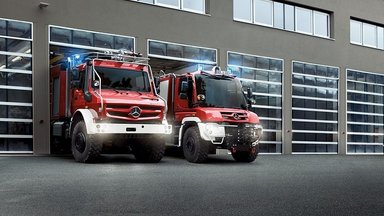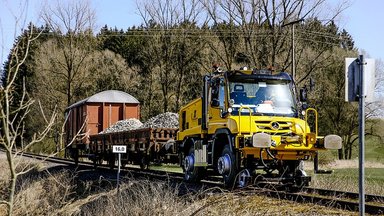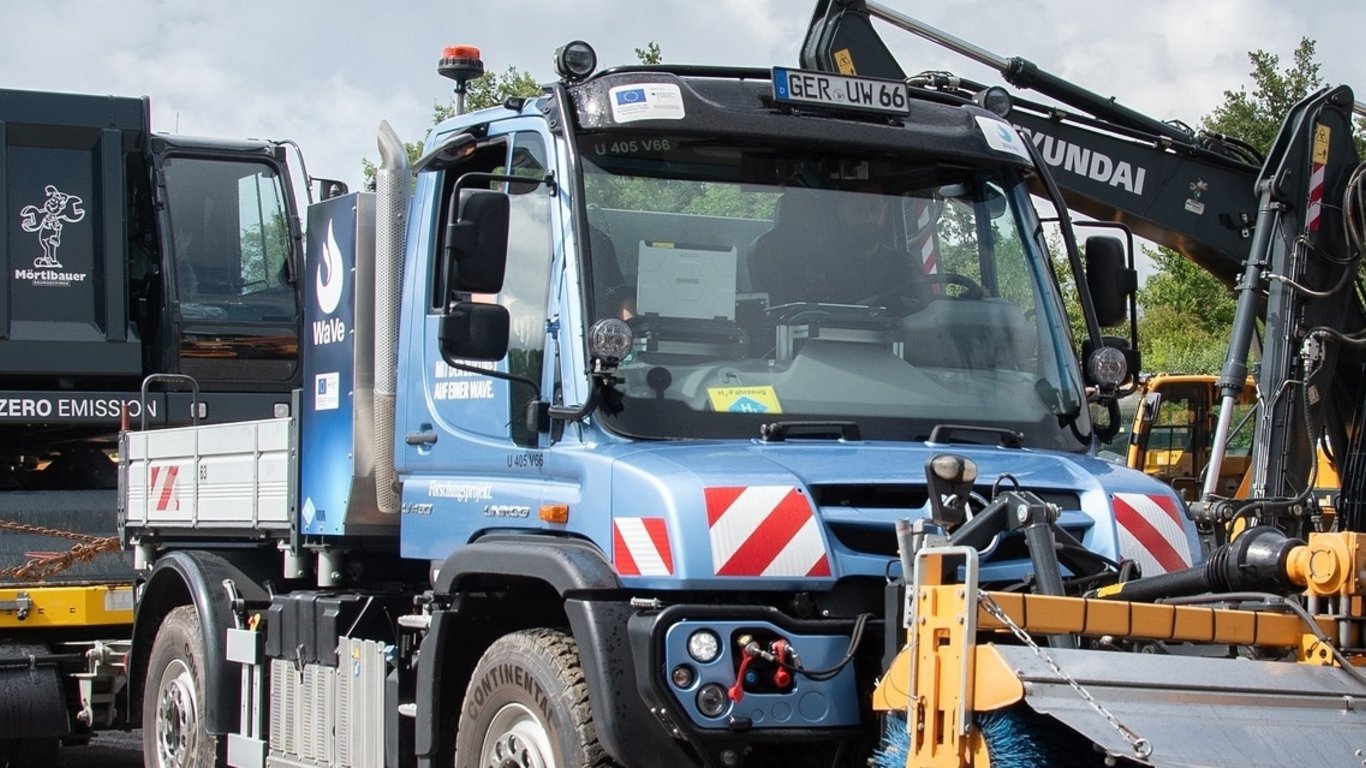
Successful development project for hydrogen combustion engines
Download
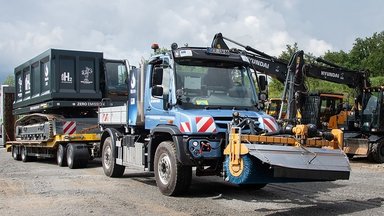
Successful development project for hydrogen combustion engines
Mercedes-Benz Special Trucks and Mörtlbauer present their two vehicle prototypes with hydrogen combustion engines After two years of development, both vehicles have already been tested in driving, working and refuelling operations The hydrogen combustion engine requires only minor modifications and can be used in a similar way to today’s diesel engine The “WaVe” project to develop two hydrogen combustion engines has been…
- Mercedes-Benz Special Trucks and Mörtlbauer present their two vehicle prototypes with hydrogen combustion engines
- After two years of development, both vehicles have already been tested in driving, working and refuelling operations
- The hydrogen combustion engine requires only minor modifications and can be used in a similar way to today’s diesel engine
- The “WaVe” project to develop two hydrogen combustion engines has been successfully completed
- Franziska Cusumano, Head of Mercedes-Benz Special Trucks: “After numerous test deployments, emission measurements, and technical fine tuning, we are
convinced that hydrogen combustion for work machines with high power requirements, both for driving and for powering auxiliary drives, is worthwhile,
practical, and very low in emissions.”
Fürstenzell/Wörth am Rhein – Mercedes-Benz Special Trucks and Mörtlbauer Baumaschinen Vertriebs GmbH jointly presented their two prototypes as part of the “WaVe” development project to research hydrogen combustion engines for special-purpose vehicles. The Unimog test vehicle and crawler demonstrated their performance in driving and working operation on the Mörtlbauer factory premises in Fürstenzell, Bavaria. The demonstration took place at the end of the project funded by Germany's Federal Ministry for Economic Affairs and Climate Action in which Mercedes-Benz Special Trucks and Mörtlbauer developed two hydrogen combustion engines together with 16 other consortium partners. The drive system has already been in use for over a year for various tests in the Unimog implement carrier. The dump truck crawler was put into operation in spring 2024 and has since also proven itself in initial application-specific tests.
Franziska Cusumano, Head of Mercedes-Benz Special Trucks: "The final event held together with our partner Mörtlbauer on their premises once again demonstrated that both vehicles have reached a development status that we can be very satisfied with, even though this project has run for just three years. After numerous test deployments, emission measurements, and technical fine tuning, we are convinced that hydrogen combustion for work machines with high power requirements, both for driving and for powering auxiliary drives, is worthwhile, practical, and very low in emissions.”
Armin Mörtlbauer, Managing Director of Mörtlbauer Baumaschinen Vertriebs GmbH: "The fact that our crawler and the Mercedes-Benz Special Trucks Unimog can be easily refueled with gaseous hydrogen and that these vehicles also work reliably when using implements is the result of the outstanding cooperation in this research partnership. We have researched and understood this technology. We now have the corresponding experience and data. However, to apply these in series production, we have to go even further on this path. If the government and society choose to follow the path toward hydrogen combustion engines, we are ready to go."
The specially converted Unimog U 430 implement carrier transported the crawler on a low loader to the event on the Mörtlbauer company premises. After a short drive on its own tracks, the developers then demonstrated the refueling process at a mobile hydrogen refueling station. The Unimog also demonstrated implement operation with a front-mounted sweeper from Schmidt.
With vehicles designed for this kind of work, the challenge is ensuring that the respective implement can be operated via a power take-off when driving. This usually requires sustained high power output. Using the two vehicle prototypes as an example, the WaVe project team demonstrated that the hydrogen combustion engine is particularly well-suited for such applications. The propulsion concept of hydrogen combustion ensures low emissions when driving and working while simultaneously ensuring a consistently high engine output.
Under the hood of the prototype vehicles
The Unimog and crawler are equipped with a medium-duty engine that the experts converted especially for hydrogen propulsion. For this purpose, customized pistons, a hydrogen-compatible intake system, and an optimized ignition system were used. Hydrogen combustion in the engine compartment of the Unimog and crawler produces water, which is discharged as hot steam via the exhaust system.
On the Unimog, the four TÜV-certified, 700 bar high-pressure tanks hold around 13 kilograms of gaseous hydrogen in total. The engine delivers around 290 hp / 1000 Nm, making it comparable with a 300 hp diesel variant in terms of output and torque. The prototype was operated with several different attachments in order to incorporate insight from real-life use directly into development.
The crawler dumper achieves similar values with its hydrogen combustion engine: The engine output is almost identical, and the fuel tank holds 14.5 kilograms of hydrogen at 700 bar. The crawler has a bed capacity of 16 cubic meters and can carry a payload of 30 metric tonnes. With its dozer blade and 360-degree rotating body, this crawler can be used flexibly to transport loose bulk material.
The “WaVe” development project
The test vehicle with a hydrogen combustion engine was developed as part of the publicly funded “WaVe” project. The project, funded by Germany's Federal Ministry for Economic Affairs and Climate Action, was jointly realized by 18 partners from industry and science and started in July 2021. After a year of planning and preparations, development work on the prototypes began in mid-2022. The objective of the WaVe project was to develop a hydrogen-based drive system for working machines and thus replace the conventional diesel engine. It was shown that hydrogen-powered vehicles and working machines can be used in very similar ways to the current diesel engine with only minor modifications to the drivetrain components.
Article assets

Successful development project for hydrogen combustion engines
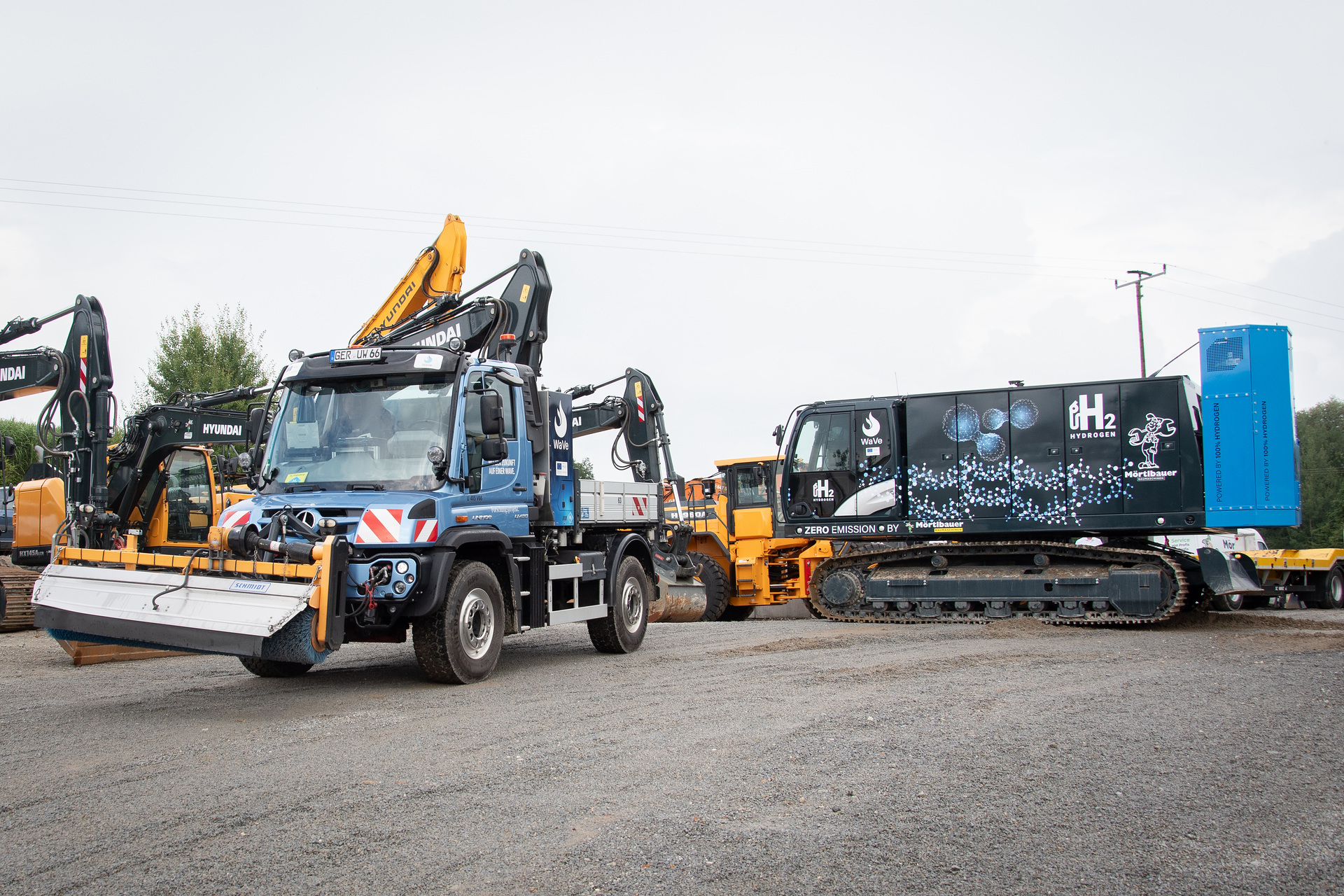
Successful development project for hydrogen combustion engines

Successful development project for hydrogen combustion engines

Successful development project for hydrogen combustion engines

Successful development project for hydrogen combustion engines

Successful development project for hydrogen combustion engines

Successful development project for hydrogen combustion engines

Successful development project for hydrogen combustion engines

Successful development project for hydrogen combustion engines

Successful development project for hydrogen combustion engines

Successful development project for hydrogen combustion engines

Ulrike Burkhart
Spokesperson Mercedes-Benz Trucks Product, Service & eTruck
ulrike.burkhart@daimlertruck.com
+49 160 861 3757

Lukas Hettmannsperger
Spokesperson Mercedes-Benz Special Trucks
lukas.hettmannsperger@daimlertruck.com
+49 170 3871112












